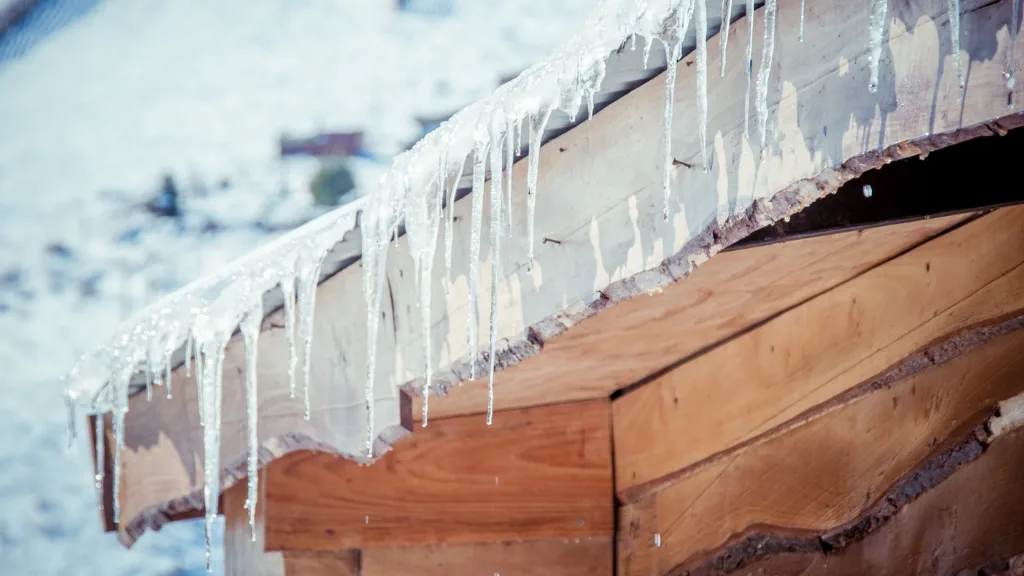
As a homeowner, it’s important to know the right time to schedule your roofing project. But what temperature is too cold for roofing?
If you’re wondering about the answer to this question, you’re in the right place. In this article, we’ll explore the temperature range that’s suitable for roofing and the factors that can affect the installation process.
From the impact on shingles to the safety concerns for workers, we’ll cover everything you need to know to ensure your roofing project is a success. So, whether you’re a DIY enthusiast or hiring a professional, read on to learn more about the ideal temperature for roofing!
Working Conditions in Cold Weather
When working in cold weather, you need to take extra precautions to ensure your safety and comfort. Roofing work requires physical labor, which can be challenging in cold temperatures. Here are some things to keep in mind:
Challenges of Roofing in Cold Weather
Roofing work in cold weather can be challenging due to the following reasons:
- Difficulty staying warm: As the temperature drops, it can be challenging to stay warm while doing strenuous physical labor outside for extended periods.
- Adhesive properties of roofing materials: Many roofing materials have adhesive properties that require the sun’s heat to activate. If the temperature is too low, the adhesive may not work correctly, leading to a faulty roof installation.
- Brittleness of shingles: Shingles can become brittle and more prone to breakage in cold weather, making them more challenging to work with.
Tips for Roofing in Cold Weather
Here are some tips for working in cold weather to ensure your safety and productivity:
- Dress in layers: Wear multiple layers of clothing to stay warm. Make sure to wear a hat and gloves to protect your head and hands.
- Use a safety harness: When working on a roof, always use a safety harness and lanyards to prevent falls. Use deadweight anchors to secure the lanyards to the roof.
- Take breaks: Take frequent breaks to warm up and rest. This will help you stay energized and focused.
- Stay flexible: Cold weather can make materials more challenging to work with, so be prepared to adjust your techniques accordingly.
- Follow safety precautions: Always follow safety precautions to prevent accidents and injuries. Make sure to keep the work area clean and free of debris.
By following these tips, you can ensure that you stay safe and comfortable while working in cold weather. Remember to take breaks and stay flexible to maintain your productivity and efficiency.
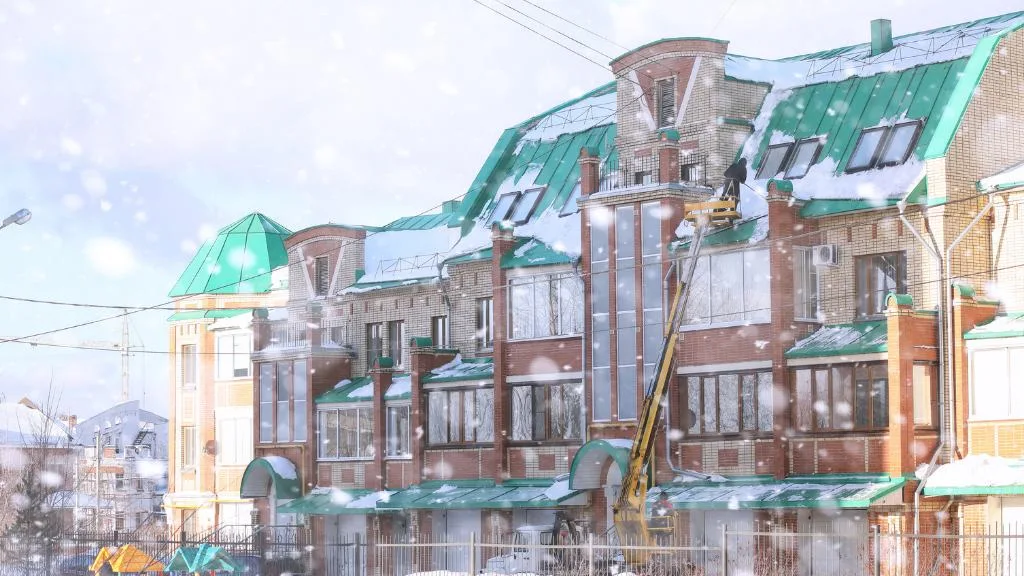
Effects of Cold Weather on Roofing Materials
When the temperature drops, it can have a significant impact on your roofing materials. Here are some of the effects of cold weather on different types of roofing materials.
Asphalt Shingles
Asphalt shingles are the most common roofing material used in the United States. When the temperature drops, asphalt shingles can become brittle and lose their flexibility.
This makes them more prone to cracking and breaking, which can shorten the lifespan of your roof.
Additionally, the adhesive properties of asphalt shingles can be affected by cold weather. If the shingles are installed when it’s too cold, the adhesive may not bond properly, which can lead to leaks and other problems.
Other Roofing Materials
Other roofing materials, such as clay, metal, concrete tiles, slate tiles, and wood shingles, can also be affected by cold weather. Here are some things to keep in mind:
- Clay tiles can crack if they freeze and thaw repeatedly.
- Metal roofing can contract and expand with temperature changes, which can cause fasteners to loosen and lead to leaks.
- Concrete tiles can absorb water, which can freeze and cause the tiles to crack.
- Slate tiles can become brittle and crack in cold weather.
- Wood shingles can warp and split if they’re exposed to moisture and cold temperatures.
If you’re planning to install a new roof or repair an existing one in cold weather, it’s important to take these factors into account. Make sure you’re using the right materials and that you’re installing them correctly. You may also need to adjust the compressor pressure and depth to compensate for the temperature.
In general, it’s best to avoid roofing work when the temperature is below 40 degrees Fahrenheit. If you must work in cold weather, take precautions to protect yourself and your materials.
Work shorter hours, plan around the weather forecast, and make sure you’re using the right tools and equipment for the job.

Weather Conditions and Roofing
When it comes to roofing, weather conditions play a crucial role in ensuring the safety of the workers and the quality of the work. Here are some of the weather conditions that can affect roofing:
Snow and Ice
Snow and ice can be dangerous for roofers as they can cause slips and falls. Additionally, the weight of snow and ice can put pressure on the roof, causing it to collapse. It is important to clear the snow and ice from the roof before starting any roofing work.
Rain
Rain can also be a challenge when it comes to roofing. Wet surfaces can be slippery, making it difficult for workers to move around. Moreover, rain can seep into the roof and cause damage to the structure. It is important to ensure that the roof is dry before starting any work.
Wind
Strong winds can be a major challenge for roofers as they can make it difficult to maintain balance. Additionally, wind can blow debris onto the roof, causing damage to the structure.
It is important to ensure that the roof is clear of debris before starting any work.
It is also important to consider the pressure on the roof. Straight angled flush is a common design for roofs, but it can cause pressure points where the roof meets the walls. Gutters, ridges, and valleys can also cause pressure points. It is important to ensure that the roof is properly supported to avoid any structural damage.
In conclusion, weather conditions can greatly affect roofing work. It is important to take the necessary precautions to ensure the safety of the workers and the quality of the work.
By considering the weather conditions and taking the necessary steps, you can ensure that your roofing project is a success.
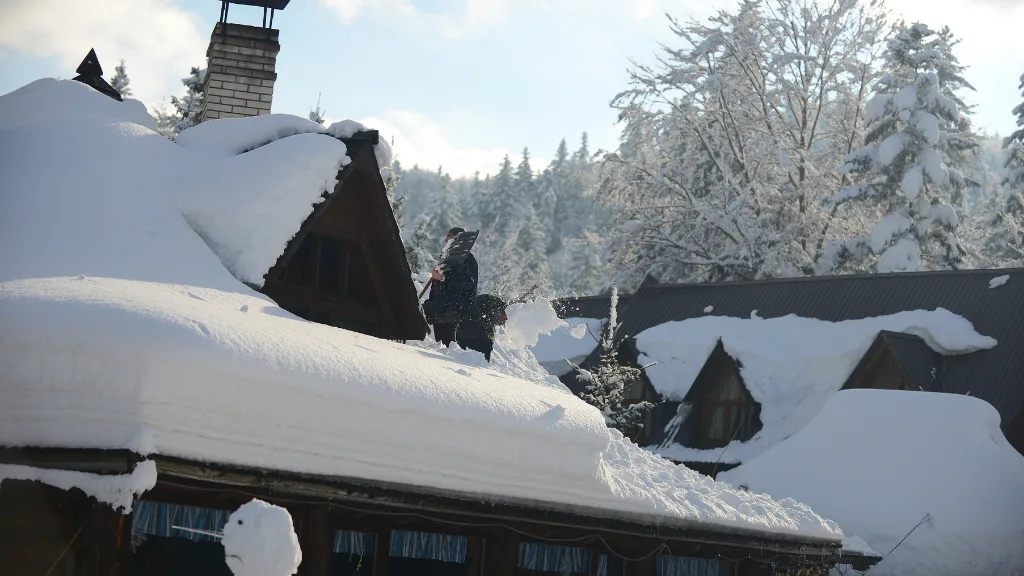
Safety Hazards and Precautions in Cold Weather Roofing
When working on a roof in cold weather, there are some safety hazards that you need to be aware of. Here are some precautions you can take to minimize the risks:
Fall Protection
Falls are one of the most common hazards when working on a roof. In cold weather, the risk of slipping and falling increases due to ice and snow.
To prevent falls, you should use fall protection equipment such as safety harnesses, guardrails, and lanyards. Deadweight anchors can also be used to secure the fall protection equipment.
Extra Steps for Safety
In addition to fall protection equipment, there are some extra steps you can take to ensure your safety when working on a roof in cold weather. For example, you can wear non-slip boots with good traction to prevent slipping on ice. Y
ou can also use a safety line to secure yourself to a stable object, such as a chimney or vent pipe, while you work.
Safety Equipment
When working on a roof in cold weather, it’s important to wear appropriate safety equipment. This includes a hard hat to protect your head from falling debris, safety glasses to protect your eyes from flying objects, and gloves to keep your hands warm and protected.
Another important piece of safety equipment is a respirator to protect your lungs from inhaling harmful substances, such as dust and fumes from roofing materials. Make sure to choose a respirator that is appropriate for the type of work you are doing and that fits properly.
In conclusion, working on a roof in cold weather can be hazardous, but with the right precautions, you can minimize the risks. Always use fall protection equipment, take extra steps for safety, and wear appropriate safety equipment to protect yourself from falls, pressure, and other safety hazards.
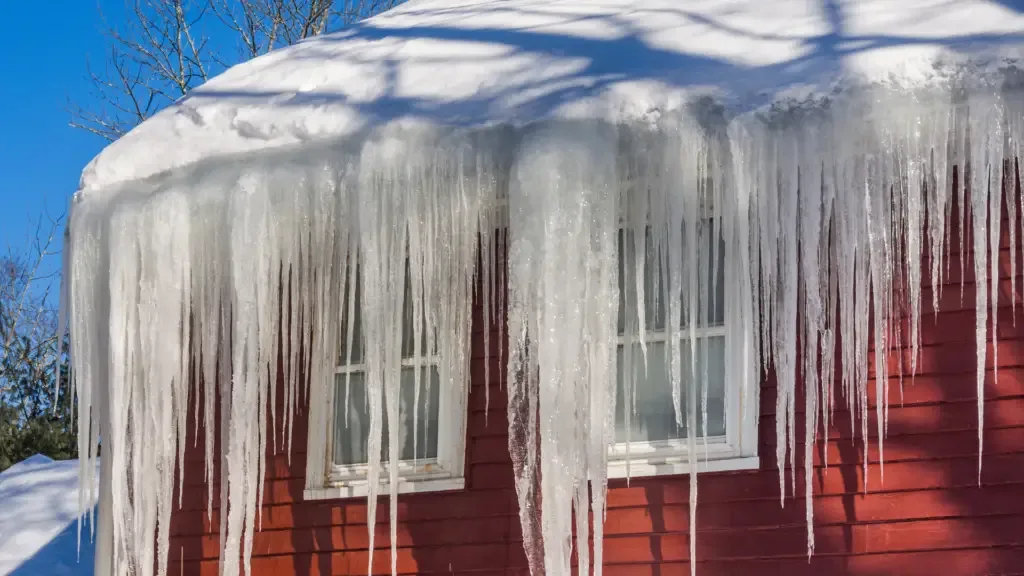
Emergency Roofing in Cold Weather
When it comes to roofing emergencies in cold weather, time is of the essence. You need to act quickly to prevent further damage to your roof and home. Here are some steps you can take to address a roofing emergency in cold weather.
Roofing Emergency
If you notice a leak in your roof, the first step is to contain the water to prevent further damage. Place a bucket or other container under the leak to catch the water.
If the leak is large, you may need to use a tarp or other waterproof material to cover the affected area.
It is important to address the leak as soon as possible to prevent water damage to your home’s interior. If you are unable to address the leak yourself, contact a professional roofing contractor to assess the damage and make necessary repairs.
Winter Weather Membranes
In cold weather, it is important to ensure that your roof is properly insulated to prevent heat loss and the formation of icicles. Winter weather membranes can help protect your roof from the effects of cold weather.
Winter weather membranes are designed to prevent ice dams from forming on your roof. Ice dams can cause water to back up under your shingles, leading to leaks and other damage.
Slips and Cracking
In cold weather, it is important to be cautious when walking on your roof to prevent slips and falls. Ice and snow can make your roof slippery, increasing the risk of injury.
Cold weather can also cause roofing materials to become brittle and more prone to cracking. If you notice any cracking or other damage to your roof, it is important to address the issue as soon as possible to prevent further damage.
Conclusion
In conclusion, roofing emergencies in cold weather can be stressful and potentially damaging to your home. By taking the appropriate steps to address the issue quickly, you can prevent further damage and ensure the safety of your home and family. Remember to always prioritize safety when addressing roofing issues in cold weather.
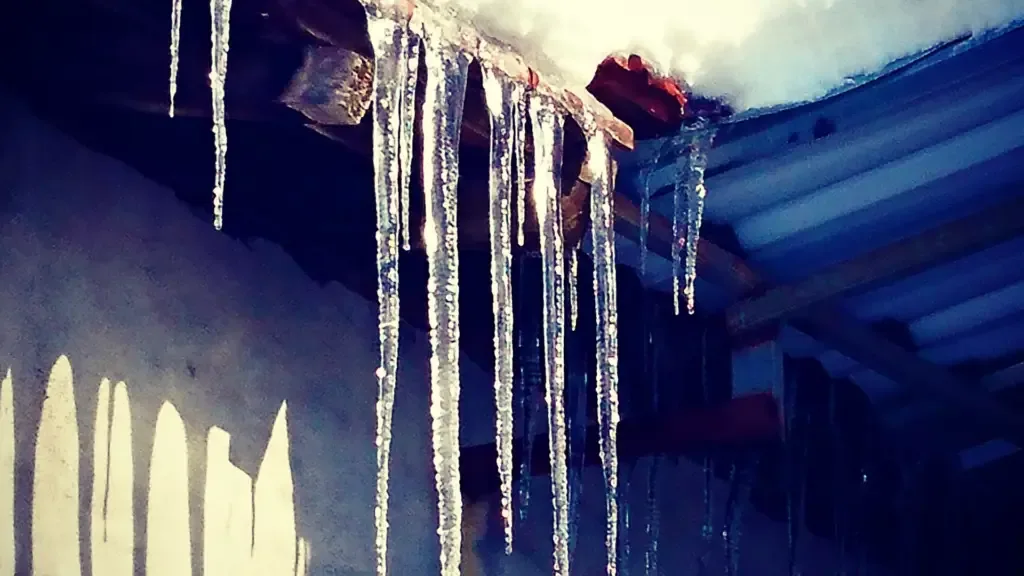
Conclusion
In conclusion, it is important to understand that roofing in cold temperatures can be challenging and may affect the quality of the work. Manufacturers recommend that roofing work be done when the temperature is above 40°F to ensure the best results.
When it comes to roofing, expertise is key. It is important to hire a professional roofing contractor who has experience working in cold temperatures and can ensure that the job is done right.
Additionally, it is important to check your warranty to ensure that roofing work done in cold temperatures is covered.
Surface warmth is also an important consideration when roofing in cold temperatures. Using hot boxes or other methods to keep materials warm can help ensure that they are installed properly.
Hand-sealing and using sealant can also help ensure that the roof is properly sealed and protected from leaks.
If you have skylights or other features on your roof, it is important to take extra care when roofing in cold temperatures. These features may require additional attention to ensure that they are properly sealed and protected.
When it comes to reroofing or repairing an existing roof in cold temperatures, it is important to take extra care to avoid damage to the existing roof. Clay tiles, for example, may be more brittle in cold temperatures and require extra care when handling.
Additionally, it is important to wear appropriate winter boots to ensure safety while working on the roof.
Overall, while roofing in cold temperatures may be challenging, with the right expertise and precautions, it can be done safely and effectively. By following the recommendations of manufacturers and hiring a professional roofing contractor, you can ensure that your roof is properly installed
